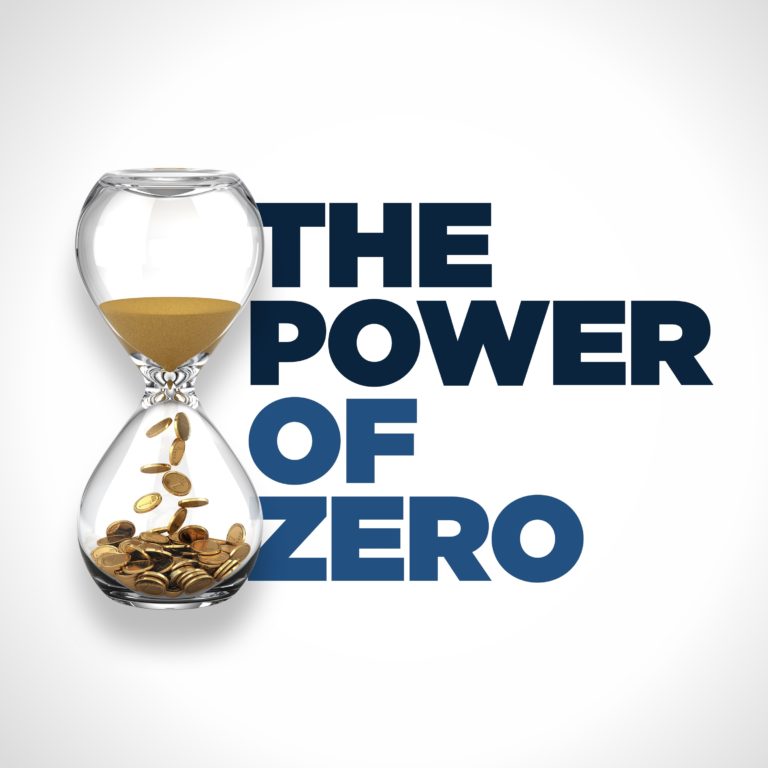Beware of These Four Significant Shortcomings
In my last article, I shared how the so-called Three Percent Rule – a commonly known retirement withdrawal strategy – came to be. However, I also teased at the end of the article that this strategy has several disadvantages. Getting your retirement withdrawal rate right is critical to ensuring you don’t outlive your nest egg, so read on to learn about four significant shortcomings of the Three Percent Rule.
If questions or concerns come to mind as you read, know that you can always reach out to me to schedule a discussion.
SHORTCOMING NO. 1: THE PRICE TAG
Think about this for a moment: If the most you can ever withdraw from your retirement portfolio in a given year is three percent, it’s going to take a staggering amount of capital to fully fund your retirement.
For example, assume your annual lifestyle need in retirement is $100,000. To determine the amount of money you will need to have saved by day one of retirement, divide the desired pretax lifestyle by the maximum sustainable distribution rate, in this case three percent.
When you divide $100,000 by .03, you find that the total capital required to fund your retirement through life expectancy is $3,333,333.33. In other words, the cost of mitigating longevity risk through stock market investing is well north of $3 million. And while it’s relatively easy to calculate the amount of money you’ll need by the time you retire, it’s much harder to accumulate it.
Many investors are startled when they realize exactly how much capital is required to fund a retirement plan that adequately addresses longevity risk. Most Americans, studies show, are not on track to accumulate the capital needed to eliminate longevity risk by the time they retire. To bridge their retirement shortfall, they often resort to one or more of the following none-too-appetizing alternatives:
- Save more: This may mean cutting back on your lifestyle during your working years in order to earmark more for your retirement savings.
- Spend less: This option involves lowering expectations for lifestyle spending in retirement. Instead of spending $100,000 per year, for example, you may only be able to spend $80,000.
- Work longer: Pushing off your retirement date does two things: it gives your money more time to grow and it shortens the time period over which that money needs to last.
- Die sooner: Does anyone really like this option?
- Take more risk in the stock market: By taking more risk with your investments, you could grow your money more productively and meet your accumulation goals by retirement. But taking more risk doesn’t guarantee a higher rate of return. More risk means wider swings in the market, which means you could miss your accumulation goal by an even wider margin.
Because of the revised Three Percent Rule, it now takes even more capital to ensure that sequence-of-return risk doesn’t sink your retirement ship. It also means you’re more likely to have a retirement shortfall today than you ever were under the older Four Percent Rule! And if your retirement plan is underfunded, these five alternatives are sure to give you a bad case of heartburn!

SHORTCOMING NO. 2: INFLEXIBLE DISTRIBUTIONS
The second shortfall of the Three Percent Rule is that it leaves very little margin for error. In other words, it only really works if you stick to the program. For example, suppose circumstances require you to occasionally stray from the Three Percent Rule. One year you take five percent, another year six percent, and another year four percent. In the very moment you violate your three percent threshold, the probability that your money lasts through life expectancy begins to drop. You see, the Three Percent Rule is a jealous master. For it to work reliably, it has to be obeyed with precision.
And, that’s difficult to do over a 30-year retirement, especially when your retirement savings are liquid, accessible, and clamoring to be spent!
SHORTCOMING NO. 3: THE NEED FOR DISCIPLINE
The Three Percent Rule requires unflinching discipline when markets are erratic. You’ve been told to buy low and sell high, but when investors succumb to their emotions during volatile markets, they do just the opposite. They buy high and sell low. As a result, their returns suffer, and they fail to harness the growth necessary to make their money last through life expectancy. The Three Percent Rule only really works if you stick with the investment allocation you started with at the beginning of your retirement. If you’re constantly moving your stock portfolio to cash every time the market gets jittery, then the complex math that upholds and sustains the Three Percent Rule begins to breakdown.
In short, the Three Percent Rule requires that you become an emotionless automaton in retirement. Not only do you have to obey the 3 percent withdrawal rate with dogmatic precision, but you have to keep your money fully invested – even when the theater is on fire and everyone is running toward the exit.
SHORTCOMING NO. 4: THE ILLUSION OF LIQUIDITY
The last shortfall of the Three Percent Rule is its illusion of liquidity. When your retirement distributions are governed by the Three Percent Rule, you aren’t nearly as flush as you think. To demonstrate why, let’s go back to our $100,000 lifestyle example. To truly eliminate longevity risk, you will have to have accumulated $3,333,333 by day one of retirement. And even though your retirement account is chock-full of cash, practically begging to be spent, you have to remember that every last dollar has been claimed by the Three Percent Rule. All of that money is responsible for generating the income required to pay for your living expenses over the arc of your life expectancy. Not a dollar can be spared. It isn’t a buffer account, and it can’t be earmarked for those unexpected discretionary expenses that invariably arise.
Because this pile of money seems massive, it can easily be mistaken for a spend-at-will discretionary account. Fifty thousand dollars for the roof. Twenty-five thousand for some out-of-pocket health care expenses. Ten thousand to take the grandkids to Disney World. Before you know it, you’ve been seduced by your portfolio’s liquidity! As a result of all these seemingly harmless expenditures, the Three Percent Rule— and the high success rate it ensures— goes out the window. You no longer enjoy that high probability of never running out of money in retirement.
Now, there’s nothing to prevent you from accumulating an additional pool of money that can meet your discretionary needs in retirement. But that just forces you to accumulate an amount above and beyond the sum required to satisfy the Three Percent Rule.

DISCRETIONARY EXPENSES IN RETIREMENT
Discretionary expenses in retirement break down into two categories:
- Shock expenses: These are unexpected expenses that might include out-of-pocket medical costs, housing repairs, family expenses, and changes in marital status.
- Aspirational expenses: These include the costs of travel, gifts to family, hobbies, boat purchases, country club memberships, or other retirement splurges.
THREE PERCENT RULE CHALLENGES IN SUMMARY
Adherence to the Three Percent Rule can inject a high degree of predictability into your retirement plan and all but eliminate longevity risk. But it’s an awfully expensive way of doing so. It requires accumulating massive amounts of capital that may be beyond the reach of the average investor. What’s worse, it requires an unflinching allegiance that leaves very little margin for error.
If you haven’t implemented a strategic plan with Hanson Wealth Management, please reach out for a consultation to see how this wisdom could look in your world. My approach to a secure retirement includes lowering your tax burden and optimizing your income streams with the objective of achieving a tax-free retirement so you can truly live your best life.



